Originally intended to cost $425 million, Guyana’s Olympic standard pool was built at a cost of $581 million and questions have been raised about the price tag and the structural integrity of the main facility, which is now being retrofitted with a $38.7 million warm-up pool which critics say should have been built from the outset.
When plans for a National Aquatic Centre at Turkeyen, where the pool is situated, were first announced, consultants hired to determine its cost came up with an estimate of around $425 million, although the Minister of Culture, Youth and Sport had announced that the centre would be built at a cost of $316 million. However, several missed deadlines, defects, and defect corrections later, the final cost of the centre has shot up to over half a billion dollars.
Government had announced ambitions to build the centre since 2007. The facility, Minister of Culture Youth and Sport Dr Frank Anthony had said, would contain a 25-metre warm-up pool, spectator stands, a pump house, and the 50-metre (Olympic-sized) pool. He said that of a total of 13 contractors who placed bids, Kares Engineering successfully scored the contract to do the work. In addition to the above mentioned facilities, Kares was also required to provide fencing and landscaping.
Work commenced in February 2008, but by March it became evident that there were design issues. Despite efforts to rectify these issues, difficulties persisted. This brought work to a grinding halt in November of 2008. Work did not recommence until May 2009. But, even after the lengthy hiatus, engineering problems persisted.
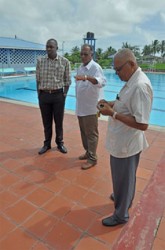
To determine how to move forward the ministry sought the advice of Fédération Internationale Natation (FINA), an international swimming regulatory body. Pursuant to these consultations, Myrtha Pools, an Italian company, was invited to make a presentation, and the company eventually submitted a pre-engineered pool for consideration.
The ministry favoured the presentation and Kares was instructed to scale back on the amount of work it was first contracted to do, while Myrtha Pools was awarded a contract to design and build a pre-engineered 50-metre pool. Anthony, in a recent interview with Stabroek News said he did not believe the decision to choose Kares for the construction was flawed.
The minister said that Kares Engineering, like the other 13 bidders, went through a very transparent public tendering process, at the end of which the contracting firm was deemed best suited to undertake the works. He continued that after the ministry found that Kares was not making the deadlines, and that the quality of work being done was less than desirable, a decision was taken to re-tender the contract for the 50-metre pool, and Kares’s responsibilities were reduced.
Cost tops $500M as delays continued
Under the new arrangement, Cabinet approved $241.2 million for Myrtha Pools to do its portion of the work, while Kares’s contract was reduced to $214.4 million, pushing the new cost for the pool up to $455.6 million. This amount surpassed the initial cost, as well as the estimate prepared by consultants. Both contractors completed their respective works in August of 2010.
By the end of 2010 though, the pool was not yet commissioned and Anthony announced that this would not happen until small defects identified were rectified. The defects, he had said, were found after the structure was scrutinised. Corrective works were carried out and the pool was finally commissioned in the final quarter of 2011, around three years after Anthony first promised it would be completed.
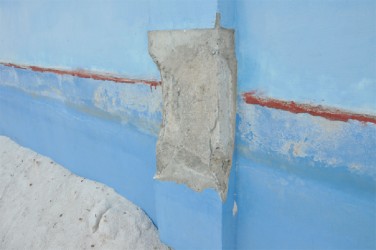
In March of 2012, Anthony revealed that the actual cost for the construction of the National Aquatic Centre was not $455.6 million, but $581.3 million. The revelation was prompted by questions posed to him by Alliance for Change (AFC) leader Khemraj Ramjattan during a National Assembly sitting.
Anthony had said that consultancies for design and supervision, which were provided by E&A Consultants Inc, Fotcon and Vikab, cost $22,534,500, while construction, with services provided by Kares Engineering Inc ($276,195,151); Myrtha Pools ($208,396,407); Guyana Power and Light ($4,249,268); Guyana Water Inc ($3,400,000); R Persid Construction ($20,246,127); Pioneer Construction ($9,796,270); Dipcon Engineering Services ($23,013,350) and G Bovell Construction ($3,488,870) was pegged at $558,833,432. The cost also included liabilities amounting to $3.4 million, which were covered by the ministry.
In essence, the project cost around $265 million more than was initially intended. Charles Ceres, a local geotechnical engineer and groundwater hydrologist had posited that the pool could have been built for a third of the cost actual cost. He laid the blame for the inflated cost at the feet of the engineers who worked on the project, arguing that the facility is supported by “piles too numerous to count.” He had told Stabroek News that the installation of piles was not the optimum solution, and pointed to pump stations built by Booker Tate, which did not require the driving of piles although the engineer worked at depths greater than those reached during the construction of the National Aquatic Centre.
Warm-up pool outstanding
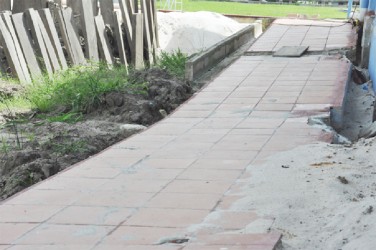
The $581.3 million does not include what is required to construct the warm-up pool. This too has seen its share of turbulence. Construction of the 25-metre warm-up pool is currently ongoing, although ministry officials had promised that it would have been completed before the end of 2012.
The announcement was made by ministry officials in August of 2012, even though no one could even say when work would commence.
Almost a year later, in June of 2013, an advertisement appeared in the Guyana Chronicle, listing the warm-up pool’s estimated cost at $38.7 million, and inviting interested contractors to bid. By October, Anthony had announced that work on the smaller pool had started and was to be completed in March, that was two months ago. This pool is also pre-fabricated and once again, Italian company Myrtha Pools, which was responsible for the main pool, has the contract.
Stabroek News asked the minister why the warm-up pool was not constructed at the same time as the larger Olympic-sized pool if the ministry’s intention was to give the centre the capacity needed to hold regional and international swim meets. Anthony’s response was that while it was, and still is the ministry’s intention to make Guyana a destination for regional and international meets, there was never an intention to build both pools at the same time. He said the project was always to be built in phases, and that priority was placed on giving Guyana a 50-metre pool, thereby erasing the disadvantage Guyanese swimmers faced before its construction.
Prior to the completion of the 50-metre pool, the largest pool used by swim clubs to practice for regional and international meets was 25 metres. Since their regional and international competitors were practicing in 50-metre pools, Guyanese swimmers were always placed at a disadvantage when they competed overseas. Until the warm-up pool is completed, swimmers are using the 50-metre pool for warm-up and competitive purposes.
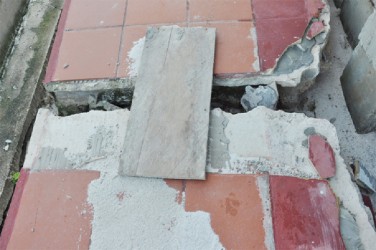
Ivan Persaud, President of the Guyana Amateur Swimming Association (GASA), told this newspaper during a recent interview that two of the 50-metre pool’s ten lanes are used by swimmers for warm-up purposes, while the remainder are used for the competitions.
Persaud continued that the lack of a warm-up pool has not affected the swimmers. He also said that GASA experiences no difficulties with regard to accessing the pool to practice.
Damage to existing structure
Meanwhile, A Partnership for National Unity (APNU) MP and Shadow Culture Youth and Sport Minister Christopher Jones said ongoing work at the National Aquatic Centre at Liliendaal, East Coast Demerara (ECD) is doing damage to the existing structures.
During a recent interview with this newspaper, Jones alluded to and presented photographic illustrations of what he said is damage done to several areas of the National Aquatic Centre including the walkway and administration building.
Jones’s offerings are the latest in the short, problem-riddled lifetime of the centre.
The MP says that work on the warm-up pool has resulted in damage to the existing structures at the centre. Jones told Stabroek News quite recently that when work began on the warm-up pool the existing prefabricated pool was damaged. He said the pile-driving for the foundation of the new pool resulted in cracks in the Olympic-sized pool which had to be fixed. He added that the pool had to be shut down for some time while the cracks, through which mud reportedly seeped into the pool, were fixed. During this time, he said, clubs looking to practice were forced to use the Colgrain Swimming Pool. This, he said, happened in February.
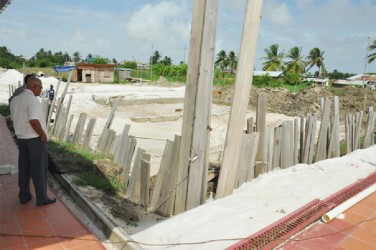
But Anthony said no such damage occurred. He added that technicians from Myrtha Pools were brought in to check the pool when such allegations were made earlier in the year. The technicians found nothing, Anthony argued. He said they even lowered the water for a thorough search.
Jones also said that sections of the administrative building have been damaged due to pile driving and other aspects of construction ongoing at the centre. He said that to curtail the damage being done by the heavy machinery at the site, workers have resorted to using wheel-barrows to transport sand.
Asked about this, Anthony said the only damage done to the existing structures was intentionally effected to make room for the warm-up pool.
Pool underutilised?
Jones is also claiming that the pool is underutilised. Persaud on the other hand, said that GASA has full access to the 50-metre pool and it is used on a daily basis.
He said that practice sessions take place for several hours beginning from about 06:00hrs and then again from 16:30hrs. He further shared that swimmers from clubs in Linden are brought to Georgetown on occasion to ensure they get the experience of practicing in a 50-metre pool.
Persaud further shared that GASA is looking to bring promising swimmers from other areas, including Bartica, Moruca and Corentyne so that they too can practice in the pool.
Jones though, is suggesting that the 50-metre pool be opened to the public a few times every week so that they can enjoy what he says is the product of their taxes.
He said the ministry also should look at providing lifeguards once this happens. Anthony though, said the 50-metre pool is a specialised facility made specifically for competitive swimming. “If you are not a good swimmer it would be difficult for you to swim in this pool,” he told this newspaper.
Everyone who currently uses the pool, he continued, is a certified swimmer and part of a club, the national swim team, and another group which seeks permission from time to time to use the pool to swim. Before recreational swimming is allowed, he said, people must first be certified.
Anthony says that the ministry has been working for some time to set up a club arrangement so that members of the public can have access to the pool.




